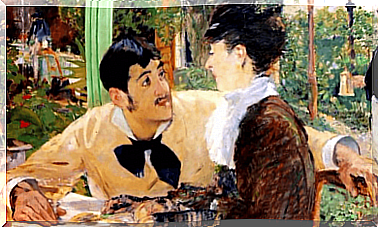Women And Girls In Science, For A Future Of Equality

Sometimes you have to look back to correct mistakes and design a better future. In this attempt to build a tomorrow with greater potential, well-being and progress, there is a pending account: that of the inclusion of women and girls in science. Until not long ago, this sphere has been predominantly male, but today we are already taking small steps to achieve authentic equality.
If we asked any boy or girl right now to draw a person working in a scientific area, most of them would agree on the same image. An older man in a white coat and perhaps very similar to “Doc” the scientist from the movie Back to the Future . Likewise, if we ask anyone for the name of a woman who dedicated her life to science, few could give more references than those of Marie Curie.
Figures such as Rita Levi-Montalcini, Lise Meintner, Sophie Germain or Marie Anne Pierrette-Paulze are diluted in the majority oblivion. Perhaps, because names like Isaac Newton, Benjamin Franklin, Nicola Tesla or Louis Pasteur have completely eclipsed that scientific podium where they always had greater opportunities, position and prestige.
Does that mean that throughout history the number of women who dedicated themselves to science was such a minority? Absolutely. The problem is that there were, but they were in the shadow of men. An example of this is Mileva Einstein, Albert Einstein’s first wife.
Many called her the old witch, for being exceptionally brilliant. According to the biographers, she was a fundamental piece in the theory of relativity formulated by Einstein and that, as we well know, earned her the Nobel …

The woman and the girl in science, our pending account
Every February 11, the day of women and girls in science is celebrated. The UN established that one of the key objectives for the next 15 years was precisely to end the gender inequality present in this discipline.
Science, technology, engineering, mathematics … The presence of women in these careers has been increasing recently and, as such, the feelings are good. However, decisive factors remain for this future of equality. Let’s analyze these aspects in depth.
The weight of gender bias
According to various UNESCO reports, less than 30% of scientific research is carried out by female personnel. Also, the number of students who enroll in fields such as information and communications technology (ICT), reaches three percent. On the other hand, in areas such as natural sciences, statistics, mathematics, statistics or engineering, it remains at just over eight percent.
Is it that women do not have the skills to dedicate themselves to these branches of knowledge? They do. But there is a problem. To achieve a real inclusion of women and girls in science it is necessary to eliminate gender biases. Today, 6 and 7-year-olds are already unconsciously internalizing which jobs “are for boys and which are for girls.”
Aerospace engineers, mathematicians, and even university professors are viewed by little ones as male figures. These are schemes loaded with prejudices that it is necessary to correct from a very young age to promote equal opportunities. Something like enhancing the scientific vocation in girls, awakening their curiosity in these areas undoubtedly generated an encouraging change that will be seen in the future.

Why are women lacking in positions of responsibility in scientific areas?
There is an undeniable fact. As we move up the professional development ladders, there is less female presence in decision-making, responsibility and management positions. What is the cause? Generally, policies to promote equality fail. The male scientist is still seen as more competent and in addition, there is another worrying factor.
Reconciling motherhood with a professional career is the greatest difficulty that women scientists have. Often, they are unable to apply for positions of greater responsibility due to the lack of support in the conciliation.
There is, on the other hand, a factor that should be noted. It is the well-known “Matilda effect” coined in 1993 by historian Margaret W. Rossiter. According to her, something that happens all too often is that women’s work tends to be belittled in favor of men.
Any advance or discovery made by a woman is overshadowed or worse, her discovery is transferred to a male figure who will take the credit. The scientist, therefore, is relegated to ostracism, without obtaining funds for her research, without being able to publish or obtain the promotions she deserves.
The woman and the girl in science, a future full of hope
Let’s teach girls that they can be whatever they want. Let us open to them the vast world of the cosmos, the tiny universe of genetics, the incredible dimension of engineering and the possibilities that all this entails for progress and for their future. For the inclusion of women and girls in science to be real, basically two factors are needed: education and opportunities.
Every boy and every girl, regardless of their situation or their country of origin, should be able to access the studies that interest them most. Because it is passion that creates progress, it is the real interest in a field of work that reverts to society itself so that it can advance. If we educate in equality and put the real means so that everyone can develop fully in their work without prejudice and obstacles, we will all win.









